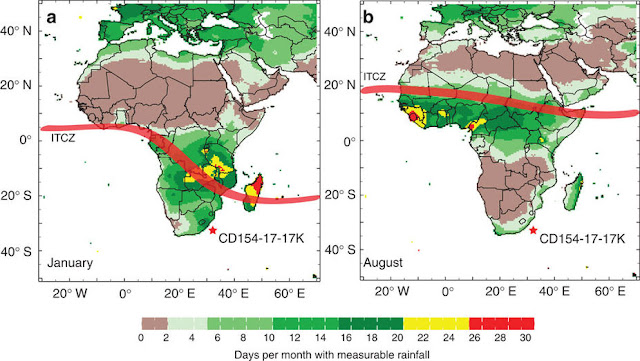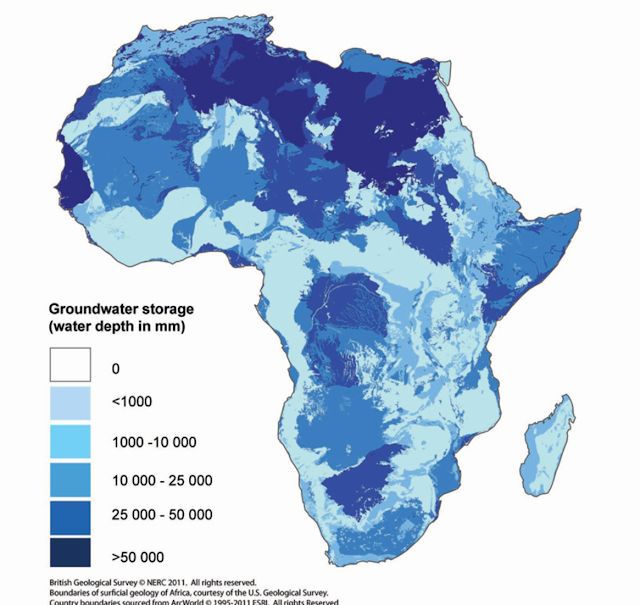Water Resources in Africa
 |
| Figure 1: Seasonality in precipitation as a result of the shift in the ITCZ (Ziegler et al., 2013) |
Local relief also influences rainfall patterns across the region (Taylor, 2004): there is increased rainfall in mountainous areas and low rainfall in the leeward side due to the rain shadow effect. Garissa, Kenya, only exhibits 298mm of rainfall a year due to in part by orographic effects from the highlands of Madagascar (Kendrew, 1961). Rift escarpments and rift depressions, however, can create orographic rainfall and rain shadow effects on a smaller scale (Taylor, 2004).
Surface water resources
Variability in rainfall produces substantial inter- and intra-annual river discharge variability: riverflow is strongly associated with these latitudinal variations in rainfall, with low latitudes having a fairly consistent river discharge and higher latitudes conversely having lower river discharges with more extreme seasonal variations. 80 percent of rivers' annual flows in Ethiopia are from July to October due to heavy rainfall from highlands and the ITCZ shift (Taylor, 2004).
Groundwater resources
The connection between groundwater and Africa's hydroclimatology is more complicated. Groundwater is thought to be rejuvenated by the seasonal input of water across much of Africa but due to its large storage capacity, groundwater discharge stays fairly consistent. It is estimated that Africa has 100 times more total groundwater storage available for abstraction than other annual renewable freshwater resources (MacDonald et al., 2012).
Climate change and its impact on Africa's freshwater resources
Climate change is intensifying precipitation: Africa is expected to experience fewer, low and medium precipitation events and instead predicted to experience more extreme events (Allan et al., 2010). Unsurprisingly, climate change is expected to have implications for Africa's water supply and therefore, its population. Of course, climate change's effect on water resources is not uniform across the continent, with different parts of Africa experiencing different impacts.
Fundamentally, wet areas are expected to become wetter and dry areas are expected to become drier.
Importantly, much of the population in Africa relies on local rivers for water (Wit and Stankiewicz, 2006), therefore, changes in overland flow caused by climate change can have serious consequences for the region: a 10 percent decrease in precipitation would cause a 17 percent decline in drainage (Wit and Stankiewicz, 2006). Additionally, 50 percent of Africa's population uses shallow or deep groundwater for its water supply. Changes in mean annual rainfall and changes in temporal and spatial distribution of rainfall is expected to change Africa's water balance, which has the ability to affect groundwater recharge (Carter and Parker, 2009).
In my next post, I plan to investigate this further by examining how climate change can specifically affect surface water supplies across Africa.


Comments
Post a Comment